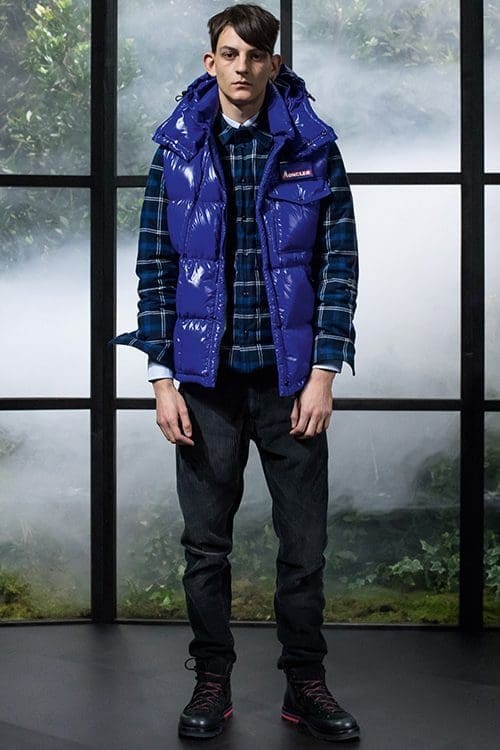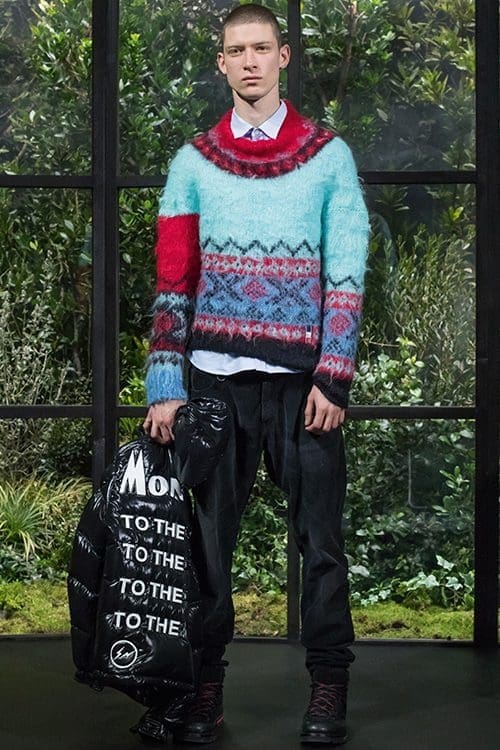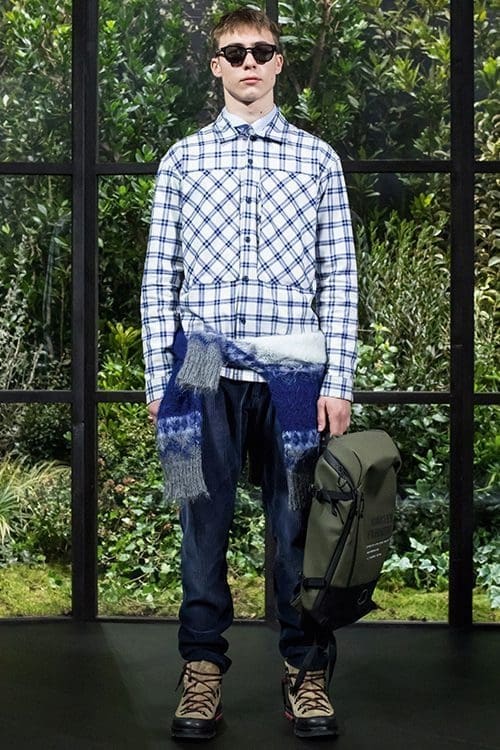People think that streetwear is sneaker culture, but I think it’s more than that — it’s about the attitude you have, Hiroshi Fujiwara, widely regarded as the ‘godfather of streetwear,’ told Business of Fashion last year on the sidelines of Pitti Uomo in Milan. He was there to launch a major collaboration with premium streetwear brand Moncler.

For those not familiar with Hiroshi Fujiwara; he is Japanese, a designer and prominent influencer of streetwear, a musician credited with introducing and popularising hip-hop in Japan, the founder of fashion label Fragment Design and home goods brand retaW. He has collaborated with Nike, Burton, Levi’s, Stussy, Supreme, Converse, Beats by Dre, K457 and Eric Clapton among others.
Luxury or premium streetwear has become a hot topic in the Industry today given its tremendous disruptive capabilities. Moreover, with the appointment of the likes of Virgil Abloh as the artistic director of Louis Vuitton’s men’s wear, for example, streetwear is no longer being disruptive from the fringes. To understand this phenomenon, we have to go back to the beginning and examine the part that Hiroshi played in the evolution of streetwear from urban youth culture to the catwalks of Paris and New York.
Hiroshi was born in Ise, Mie, along the Eastern coast of Japan, south of Tokyo. At the age of 18, he moved to the capital city and made a name for himself in Harajuku’s street fashion scene. Harajuku is a Tokyo neighbourhood renowned for its street art and fashion scene fuelled by the Japanese youths’ obsession with dressing up and bonding over each other’s creativity. This tendency became a social phenomenon in the 1980s and Harajuku became its gravitational centre.
It was also in the 1980s that Hiroshi travelled to London and New York, soaking up the subcultures of punk, hip-hop and skateboarding, and transporting them back to Tokyo. Some of the hip-hop records Hiroshi had bought while in New York, he began to play them in his DJ sessions. He is, therefore, credited not only with introducing the genre to Japan but also with popularising it. This led Hiroshi to producing music and specialising in remixes.
He also introduced the fashion associated with hip hop to Harajuku; “which he inflected with high fashion sensibilities, transforming simple items like t-shirts into luxury goods imbued with deeper meaning,” according to BoF. “Back in 1989, Fujiwara birthed streetwear label Good Enough, pioneering the concept of drip-feeding product in limited quantities well before the “drop” system was popularised by the likes of Nike and Supreme. As his name grew, he took on a growing array of activities: starting a hip-hop group, opening a concept store, writing a magazine column and serving as a mentor to fellow Harajuku designers Nigo and Jun Takahashi. But that was then. The world has changed since the days when Fujiwara’s love of Run D.M.C. records and streetwear brands like Anarchic Adjustment and Stüssy first put him on the map… And yet Fujiwara has managed to stay as relevant as ever.”
Today Hiroshi primarily works through his consultancy firm Fragment, known for the subtle design disruptions (and double lightning bolt logo) it applies to the products of others, from Nike to Louis Vuitton; Supreme to Off-White; Levi’s to Moncler.
Hiroshi’s most high-profile collaboration is the HTM project with Nike, whose CEO Mark Parker, described the project’s mission to BoF in a 2013 article thus: “to amplify new innovations, reinterpret existing designs, and explore concepts that take the brand to new places.” He also said HTM was “the company’s enema,” and that “it has the potential to change everything.”
HTM is the first initials of the first names of the three participants: Hiroshi, Tinker Hatfield, Nike’s VP of creative concepts, and Mark Parker. “Hiroshi comes out of a more style standpoint whereas Tinker and I are more on the performance side of design and are less concerned with aesthetics, you can learn a lot from the blending of those different perspectives,” according to Parker.
The HTM collaboration debuted in 2002 its take on the iconic Air Force 1. Its silhouette featured soft premium leather in dress shoe tones of black or brown, subtle details such as “HTM” in the footbed and contrast stitching. In 2004, came the Nike Sock Dart, HTM’s take on Nike’s Sock Racer. Eight years later, came the Nike HTM Flyknit Racer and Nike HTM Flyknit Trainer+, both based on the lightweight and waste-reducing Flyknit technology. In 2014, the KOBE 9 Elite Low HTM transcended the boundaries between the basketball court and culture by becoming the first low-cut Nike Flyknit hoops shoe in history. The collaboration is open-ended, and therefore another innovation may come along in due course.
Two of the latest collaborations by Hiroshi speak volumes not only of his broad appeal but also of his adaptability. One is with Moncler, the Milan based apparel manufacturer and lifestyle brand founded in 1952. The other is with TAG Heuer, the Swiss manufacturer of luxury watches and fashion accessories.
Moncler manufactures and directly distributes its clothing and accessories collections under the Moncler brand through its boutiques, exclusive department stores and multi-brand outlets throughout the world. Known for its down-jackets and winter sportswear, Moncler was a private company until 2003, when the current Chairman and CEO, Remo Ruffini took control of the company and made it a publicly traded company.
To keep the brand relevant in the fast-paced, social-media age, Ruffini launched the Moncler Genius initiative designed to appeal to millennials while also retaining the more established luxury consumers. Genius was conceived as “a hub of exceptional minds operating in unison while simultaneously cultivating their singularity.” The “exceptional minds” are eight guest designers one of whom is Hiroshi.
“We have chosen designers that differ greatly from each other as we have always spoken to different generations”, says Ruffini. “We constantly need to offer new experiences and new ideas. Moncler Genius is divided into several collections over the year. We have overhauled everything, by overcoming the very concept of seasons. Our approach is monthly, weekly, daily. An approach which considerably reduces the time that elapses between the collections’ presentation and when they actually arrive in the stores.”
The first collection under the Genius program was unveiled at last year’s Milan Fashion Week. Next, they arrived in Moncler stores, online and in select outlets in June. Then, between October and December, the brand unveiled Genius pop-ups at select retailers in New York and Tokyo.
Hiroshi’s latest collection for Moncler Genius hit the stores in December. He revisited the classic Moncler puffer in colours ranging from baby blue to electric blue, and Tricolor textures reminiscent of Tetris with detachable stickers bearing the words ‘Moncler Fragment.’ The padded flannel tartan shirts, as well as the down-jackets in their 3D version, bear the words: ‘Moncler To the South, To the West, To the East, To the North.’ Oversize woollen sweaters feature watery, distilled hues. Accessories include a series of backpacks for different purposes and hiking boots for urban trekkers.
The collaboration with TAG Heuer yielded the ‘Carrera Heuer 02 by Fragment Hiroshi Fujiwara,’ a reinterpretation of the brand’s iconic Carrera. It is a limited edition of 500 pieces, available only in TAG Heuer boutiques and online at tagheuer.com
Hiroshi began the project with “a deep dive into the product archives of the manufacture” and “learned about the history of the TAG Heuer Carrera,” according to the brand. Hiroshi then chose the original Carrera model from 1963 to transform into a Fragment-inspired timepiece.
It features beige indexes and beige rhodium-plated hour and minute hands with SuperLuminova over a sleek black dial. It also features a silver flange logo at 12 o’clock. Three black sub-dials with lacquered white hands also adorn the dial: a minute counter at 3 o’clock, a permanent second subdial at 6 o’clock and an hour counter at 9 o’clock. The black strap features a new design. The 39 mm stainless-steel case has a special stainless-steel screw-down sapphire caseback, specially engraved with its limited-edition number.
Hiroshi Fujiwara, the man who tapped into the potential of Hip Hop and Punk Rock when they were still underground currents, was the one who changed the face of Japanese street culture. More significantly, he has managed to stay ahead of the game while many of his contemporaries have either stagnated or withered. He has done this by keeping his pulse firmly on the street and simultaneously keeping tabs on the ever-changing role of the designer for a premium brand.
“A designer is not a designer anymore,” Hiroshi told BoF. “The power of design is being replaced by the power to ‘disturb’ what is expected or familiar in order to create new relevance with consumers.” Elaborating on this point he added, “Brands like Nike and Moncler need to do their own things slowly, then [someone like] me, a creative director, can play around and do something else, which is interesting.” Variety is the other key to staying relevant according to Hiroshi, which is why “I do many luxury things but also still underground things. I think to surprise people you need a good balance with high and low. I’m making a chocolate now.“


















